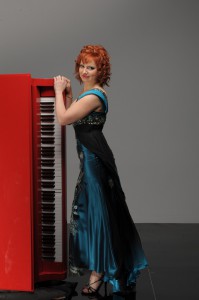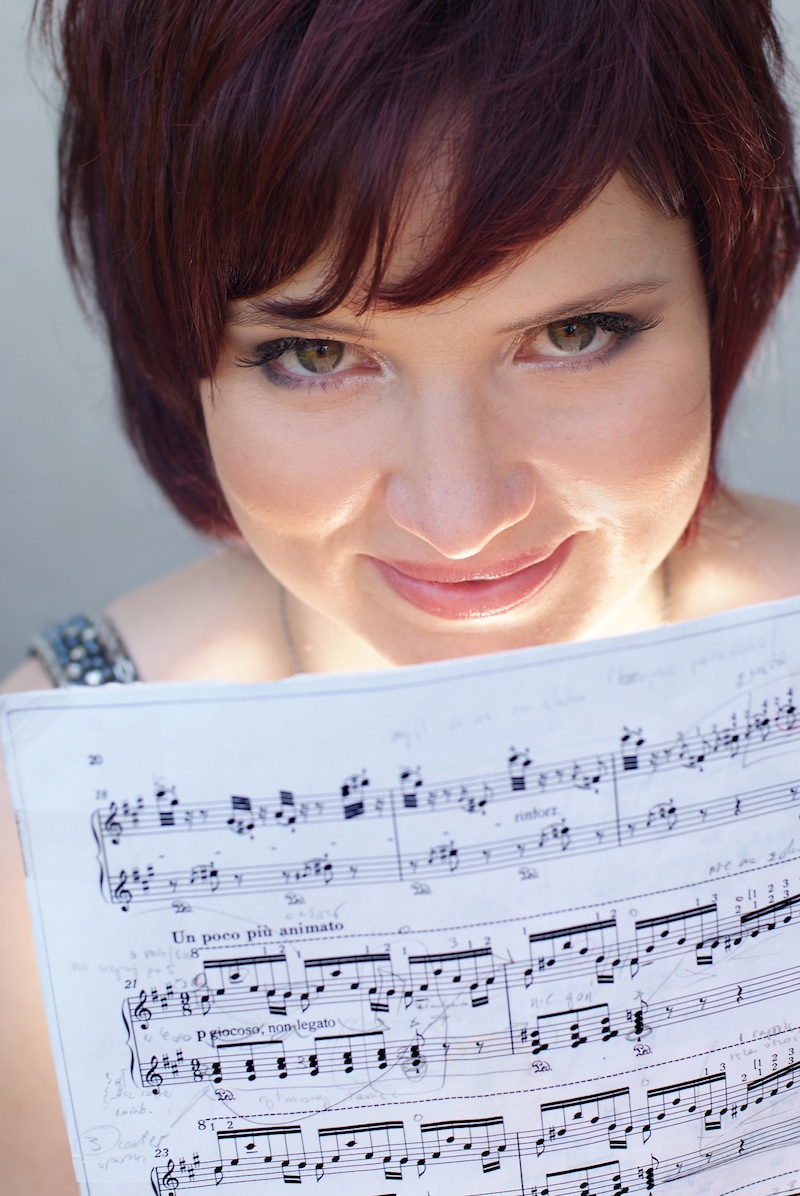The Camerata New York Orchestra presented a delightful program on a delightful Sunday afternoon, March 18, with a guest soloist, the Polish-Canadian pianist Katarzyna Musial. The Camerata, now celebrating its tenth anniversary, is a spirited chamber orchestra, 25 players strong. The American conductor, Richard Owen, Jr., its founder and Music Director, a graduate of the Manhattan School of Music, Dartmouth College (he also worked at the University for Music in Vienna) has conducted extensively, operas and symphonic music, and is also a pianist who gives concerts with his cellist wife (the Owens live in Brewster, New York with their three sons.)
For its opening salvo, Owen and the Camerata played the 3-part Overture (Spiritoso; Andante; Presto) to “La buona figliola” by Niccolò Piccinni. Piccinni (1728-1800) is listed in the New Groves as “one of the central figures in Italian and French opera in the second half of the 18thcentury.” Piccinni’s overture to one of his earliest operas is a scampering, quicksilver-light opera buffa affair, more lighthearted and volatile than many of Gluck’s more “serious” works, and Owen’s incisive, sprinting performance abounded with grace and precision.
The critic for the Wiener Zeitung (Vienna News) had a glowing praise for Owen’s Austrian debut: “he must be a genius…how flowing and musical this young American was able to realize the music from the podium.” This listener was able to assess the conductor’s stick technique, care, and phrase shaping at point-blank in the first row—and players’ response—gained a vivid impression of his gestures, his phrase shaping, expressive cantabile desired rhythmic precision and ideas about nuance and idiomatic style. Fauré’s lovely “Pavane”, a very different type of work from the Piccinni Overture, came forth with long-lined flowing cantabile lyricism.
The afternoon’s soloist, pianist Katarzyna Musial, has performed as a soloist and chamber musician throughout North America and Europe. In addition to the First Prize at the 2011 Bradshaw & Buono International Piano Competition (New York), Ms. Musial was a prize winner in the following competitions: the Krzysztof Penderecki International Competition of Contemporary Chamber Music (Cracow), the Kay Meek Competition (Vancouver), and she received the Alban Berg Prize for outstanding merit (Vienna), as well as the Philip Cohen Award for outstanding performance musicianship (Montreal).
Interested in the music of today, she has performed works by avant garde composer Jay Sydeman and gave the world premiere of a 35-minute piano suite dedicated to her, Mark Vance’s “Nevada County Epitaphs,” premiered at the California Music in the Mountains Festival. At this afternoon’s performance, Ms. Musial’s prodigious digits and tonal massiveness were impressive and appropriate for the driving, moto perpetuo called for in the Allegro Molto in Henryk Górecki’s two movement Concerto for Piano and Strings (the second, Vivace, was appropriately more gracious).Then Ms. Musial followed the Concerto with an encore, Turina’s “Seduction Dance”. Other recent concerto appearances include performances with the Toronto Sinfonietta, L’Orchestre Symphonique de L’Isle, the McGill Chamber Orchestra and the Bielsko Chamber Orchestra at the opening of the International Bach Festival (Poland).
Ms. Musial’s concert venues have included, among others, the Warsaw National Philharmonic Hall, the Chan Centre in Vancouver, the Isabel Bader Theatre in Toronto, Pollack Hall in Montreal and Weill Recital Hall in New York. She completed an Artistic residency at the prestigious Banff Centre, and she has worked with many distinguished artists that include Anton Kuerti, Paul Gulda and Piers Lane. She is a laureate of the Mrs. Cheng Koon (S.K.) Lee Scholarship as well as grants and scholarships from Conseil des arts et lettres du Québec – Vivacité Montréal, The Banff Centre, the Vancouver Chopin Society and the Quebec Polish Cultural Foundation.
The biggest surprise for this writer came after the intermission. Krzysztof Penderecki’s “Three Pieces in Baroque Style” astonished me; the famous Avant Garde didn’t pen these three courtly tonal lento and two Menuettos as a juvenile composer (as I first suspected); he wrote them down tongue-in-cheek on a lark, for a 1963 film.
The concert concluded with a magnificent account of Schubert’s Fifth Symphony (which he wrote when he was nineteen years old). Owen and his orchestra, in this small room, produced an impactful, physically potent performance—surely one of the best I’ve heard in years (remarkably close in style to the wonderful ones I remember from (Erich) Kleiber, Eduard van Beinum, Fischer-Dieskau and Toscanini).


